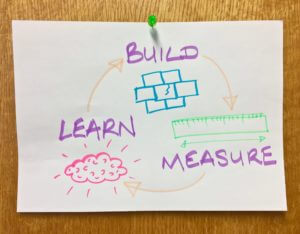We’ve helped early-stage startup founders transform their ideas into apps since 2011. And we’ve learned a lot about how to select the right features for an MVP along the way. Here’s how we make your offering as strong as it can be.
Whether you decide to build a product yourself or engage a startup-focused agency to develop your minimum viable product (MVP), feature selection can either make or break your app.
Select too many features and your app will take longer to launch, resulting in a higher cost of entry and the danger of developing features that your future customers won’t need.
Select too few features (or the wrong ones!) and your app won’t test the market fit you’re looking for. You’ll have to schedule development time staright away to fix the problem.
Check out our free report: From Idea to MVP
Consider the cost
Every feature has an initial cost in terms of the time it takes to scope, develop, test and deploy it. This is only the initial cost of the feature, and the simplest to estimate.
Once the feature is live or finished, there’s also the hidden cost of maintenance. You’ll need to look after the feature as the app evolves, and you’ll need to ensure it doesn’t get in the way of newer or more important features.
We challenge a client’s feature selection when we feel that:
- it can be done in a simpler or cheaper way
- it will pose a user experience problem in the current state of the product
- it’s not required by the users at this stage.
If we’re unsure about a feature, we sometimes wait until after the launch of the MVP to see if the user data can tell us if it’s necessary or desirable.
Test your prototype
If your product has a well-defined target market, we would recommend starting with an interactive prototype. We create these prototypes with tools like Sketch or InVision and, although they look like the real thing, they’re actually just a sequence of designed screens rather than a functioning app.
When you have your prototype, you can then sit down with your users (or potential users) and ask them to complete tasks. Say, for example, you’re building an e-commerce shop, and you’re wondering if building a wish list feature might be a good idea. Your vision for it is a heart next to each product that users can tap to save the item.
You could say to your test users: ‘Imagine browsing the site and seeing five items you like. You would like to save them to discuss your options with your partner later. How would you achieve this?’. Some people might use the heart feature, some will add products to basket and come back to it later, and some will copy-paste the URLs into an email to their partner.
This is a simplified example, but you get the idea. If you test your assumptions before you engage in any development time, you’ll only invest in the features your MVP needs to succeed.

Listen to your gut
Does this mean you shouldn’t trust your instincts? Absolutely not.
Collecting data is one thing, but hunches and gut feelings have a place in your product development too. That often-told story about Henry Ford saying that, if asked, people would only have wanted faster horses (rather than cars) illustrates this very well.
Like most things, it’s about balance. If you get a strong feeling about a feature, see if there’s a simple, low-cost way to build it and then track its usage with your analytics tools. You’ll soon see if your hunch was correct.
How we can help
We run a discovery workshop with every new client to ensure that the offering is aligned with the target market. We’ll spend a whole day taking apart your app concept, cutting large features into smaller ones and making sure that your product is lean and effective.
The final selection will be based on our experience of the industry, researched data and – sometimes – that hunch or feeling.
Once your product is live, we’ll set up all the analytical tools you need to monitor your app, allowing you to collect data on feature usage and users’ behaviours.
If this sounds like a process you could benefit from, get in touch today for a no-obligation chat about your ideas.